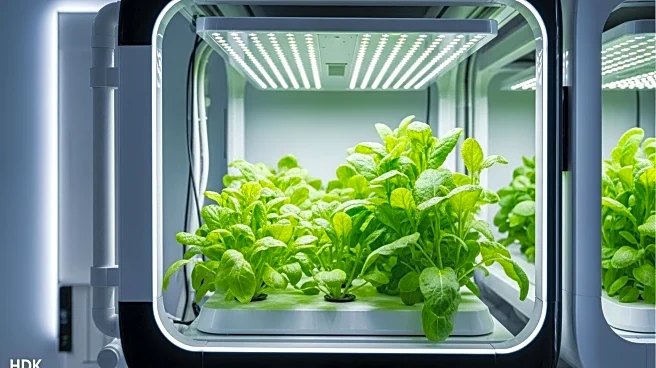What's Happening?
The global urban farming market is projected to grow from $172.62 billion in 2024 to $311.24 billion by 2032, with a CAGR of 7.6%. Urban farming involves growing food within cities using methods like rooftop gardens and hydroponics, enhancing local food security and sustainability. Key players in the market include UrbanFarmers AG, AeroFarms, and Koninklijke Philips N.V. The U.S. market is driven by demand for locally grown produce and sustainability-focused food systems, with technologies like vertical farming and AI-driven crop management gaining traction. Investment and policy support are fostering infrastructure development, while logistics innovations are improving distribution efficiency.
Why It's Important?
Urban farming addresses critical issues such as food security, sustainability, and resource efficiency, making it a vital component of modern agriculture. The growth of this market reflects increasing consumer demand for fresh, locally sourced produce and the need for sustainable food production methods. Technological advancements, including AI and IoT, are enhancing yield efficiency and reducing resource waste, positioning urban farming as a viable solution to urban food challenges. The expansion of urban farming can lead to economic benefits, including job creation and reduced transportation costs, while contributing to environmental goals like reduced carbon footprint.
What's Next?
The urban farming industry is expected to continue evolving with advancements in technology and increased investment. Companies may focus on expanding their product offerings and improving efficiency through automation and AI. Policy support and incentives could further drive growth, encouraging more businesses to enter the market. Collaboration between public agencies, private firms, and research institutions may accelerate innovation and adoption of new farming techniques. As consumer awareness and demand for sustainable practices grow, urban farming is likely to become an integral part of urban planning and development strategies.











